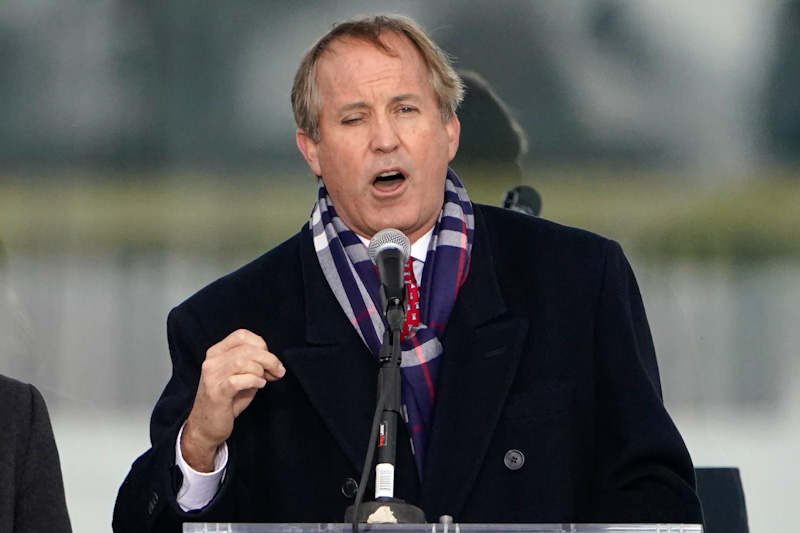Skies Darken for the EPA’s Authority
Is the current U.S. Supreme Court anti-environment, pro-business, anti-regulatory state, or something else entirely?
In the past year, the highest court in the land has issued two different opinions restricting the powers of the Environmental Protection Agency (EPA). Last month, in Sackett v. Environmental Protection Agency, all nine Justices ruled against the EPA in determining that a body of water was not regulated by the Clean Water Act. And in June 2022, six Justices ruled against the EPA in the case of West Virginia v. Environmental Protection Agency, ruling that it had exceeded its statutory authority under the Clean Air Act (we also covered this in FindLaw’s podcast, Don’t Judge Me, which you can listen to here).
But the hits to the EPA keep coming. Next year, SCOTUS is set to rule whether federal agencies (like the EPA) should be given deference when interpreting ambiguous statutes. This will come in a case called Loper Bright Enterprises v. Raimondo.
Let’s look at all three of these cases, and what may be in store for the EPA moving forward.
The Sackett Setback
Nearly 20 years ago, Michael and Chantell Sackett purchased a small lot close to Priest Lake, Idaho, to accomplish their dream of building a modest three-bedroom family home. They obtained local permits and began moving rocks and dirt to begin construction.
But the EPA wasn’t satisfied. The agency had determined that the Sacketts were discharging pollutants (soil and gravel) into “waters of the United States,” in violation of the Clean Water Act. More specifically, the wetlands on the Sacketts’ lot were adjacent to an unnamed tributary, which was on the other side of a 30-foot road. This tributary fed into a non-navigable creek, which ultimately fed into Priest Lake—an intrastate body of water.
In determining whether a body of water was part of the “waters of the United States,” the EPA used the “significant nexus” test that had been formulated in an important earlier SCOTUS ruling called United States v. Rapanos. Under this test, non-navigable waters can still be waters of the United States as long as they significantly affect the “chemical, physical, and biological integrity” of navigable waters.
The EPA notified the Sacketts that their construction violated the act, and demanded that the Sacketts return their property to pre-construction condition. If they didn’t, the Sacketts faced the threat of over $40,000 per day in penalties.
The U.S. Supreme Court not only rejected the EPA’s interpretation, but it also got rid of the “significant nexus” test altogether. This was no small deal, as courts had been using this test for fifteen years. The court’s decision was unanimous, but the Justices were split on the reasoning.
Justice Samuel Alito, writing for himself and four others, said that this test made it difficult for property owners to determine if their property contained water regulated by the EPA. This created a “potent weapon” because owners could “face severe criminal penalties including imprisonment” even if they unwittingly polluted waters.
Instead, five Justices ruled that the Clean Water Act only applied to waters that had a “continuous surface connection” (were adjoining to) waters of the United States.
While all nine Justices agreed that the Sacketts’ property was not governed by the Clean Water Act and the EPA, not all agreed with Justice Alito’s new “continuous surface connection” test. Writing for himself and three others, Justice Brett Kavanaugh characterized this test as too narrow. He would also have included “wetlands separated from a covered water only by a man-made dike or barrier, natural river berm, beach dune, or the like.”
Yes, this is all very complicated, but it’s just the tip of the iceberg. Welcome to the Clean Water Act.
West Virginia Raises “Major Questions”
This decision followed on the heels of the Supreme Court’s June 2022 decision in West Virginia v. EPA.
There, the Court strike down another EPA rule under the “major questions doctrine.” This doctrine is based on the idea that if Congress wants to delegate “decisions of vast economic and political significance” to a federal agency, it must explicitly state its intent to do so in a statute.
At issue in West Virginia was a different set of EPA rules. In 2015, under President Obama, the EPA passed the Clean Power Plan to set state-specific goals for cutting power plant emissions by 2030. But in 2019, under President Trump, the EPA repealed this plan and replaced it with the Affordable Clean Energy Rule. This new rule gave states the discretion to set these emissions standard, rather than having it set at the federal level.
President Trump’s administration argued that undoing the Clean Power Plan was necessary because the EPA had exceeded its statutory authority in passing it. Specifically, they argued that it exceeded the EPA’s authority under Section 7411 of the Clean Air Act, which allows the EPA to implement emission reduction measures, but only ones that apply to the physical premises of a power plant. The Clean Air Act did not give the EPA the kind of industry-wide measures included in the Clean Power Plan.
When this issue went to SCOTUS, a majority of six Justices agreed. Writing for the majority, Chief Justice John Roberts wrote that the Clean Air Act was “designed as a gap filler and had rarely been used in the preceding decades.” But the EPA had taken that statute and exercised “unprecedented power over American industry,” without express authority from Congress (as the major questions doctrine required). Therefore, no matter how sensible or just the EPA’s ruling, it could not stand.
Unlike Sackett v. EPA, the U.S. Supreme Court’s three liberal Justices dissented from the conclusion that the Clean Power Plan was invalid. Firstly, as a procedural matter, Justice Elana Kagan wrote, the issue was moot because the Biden administration intended to issue new rules.
Then, reaching the substance of the case, she also disagreed that the major questions doctrine should be in play. She wrote that Congress had clearly intended to give the EPA broad power, even over “major questions,” because the EPA was composed of experts. This was setting aside the issue that the stakes were high: climate change was at issue. Perhaps foreseeing a fight to come, Justice Kagan explained that despite all of the stuff the Supreme Court may know, “it does not have a clue about how to address climate change.”
EPA’s Chevron Shield
Justice Kagan’s words rang loud just months later when SCOTUS agreed to hear a challenge to an even more famous legal principle: “Chevron deference.” This doctrine requires courts to defer to a federal agency’s interpretation of an ambiguous statute. If the name “Chevron” rings a bell, it might be from the buzz around Justice Neil Gorsuch’s nomination to the Supreme Court five years ago. Liberal and conservative judges are pretty divided on the principle. Why?
Nearly 40 years ago, the Supreme Court was confronted with a thorny question, in the case of Chevron v. Natural Resources Defense Council. When Congress passes a law that isn’t clear, who is in a better position to determine its meaning: federal agencies or courts? Federal agencies, tasked with carrying out the laws, are staffed by policy experts. Courts, on the other hand, are constitutionally designed to interpret laws. The SCOTUS decided to defer to the experts (agencies), giving us what is known as Chevron deference.
Chevron deference has played an important role in modern governance because many of the statutes Congress passes are vague or ambiguous. Chevron deference prevents courts from second-guessing federal agencies’ decisions, giving the agencies significant power to interpret and enforce laws.
Agency Deference No More?
But despite the fact that one of the biggest advocates of Chevron deference was conservative Justice Antonin Scalia, many commentators have wondering whether the doctrine was not long for this world under the current court composition. We will soon have an answer, as SCOTUS has decided to squarely address this question next year: in the case of Loper Bright Enterprises v. Raimondo, the Court has agreed to hear a case about fisherman’s salaries—and, of course, Chevron.
Given that a number of current Justices have previously expressed skepticism about Chevron deference, some experts believe that the Supreme Court will overrule its precedent. This would have far-reaching implications, because it would mean that federal agencies will no longer receive deference when interpreting statutes.
A decision is expected next year. For the EPA, dark(er) skies are on the horizon.
Resources
You Don’t Have To Solve This on Your Own – Get a Lawyer’s Help
Meeting with a lawyer can help you understand your options and how to best protect your rights. Visit our attorney directory to find a lawyer near you who can help.






